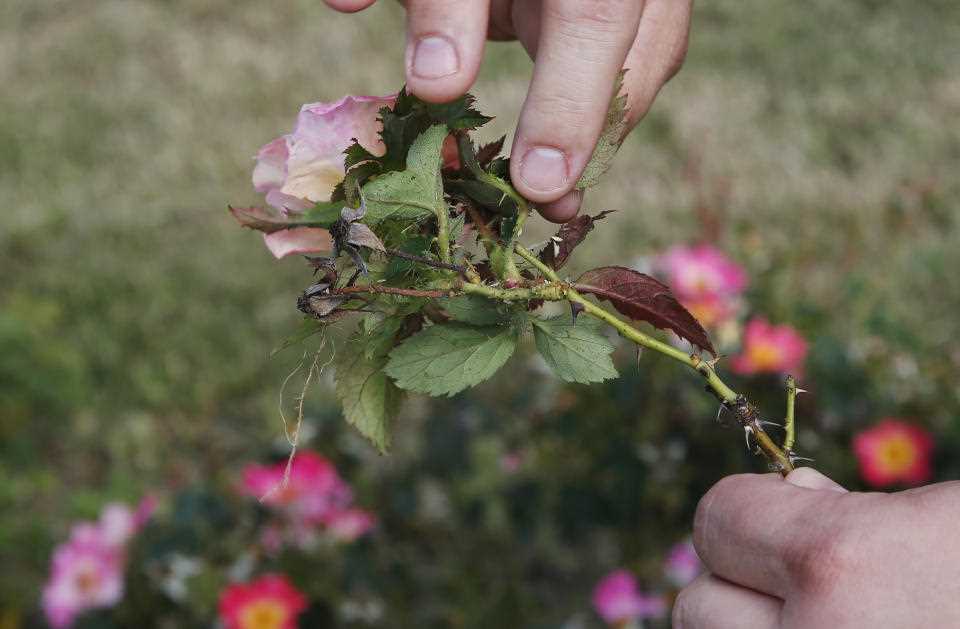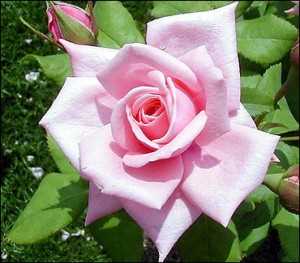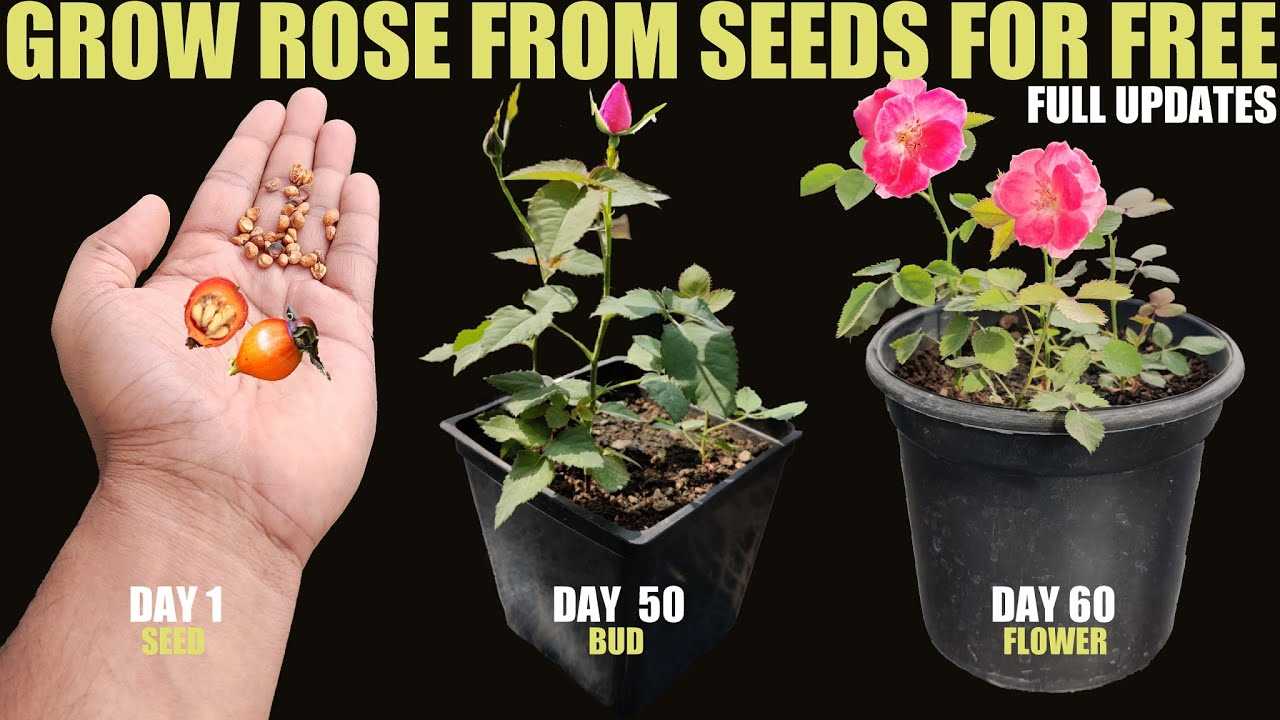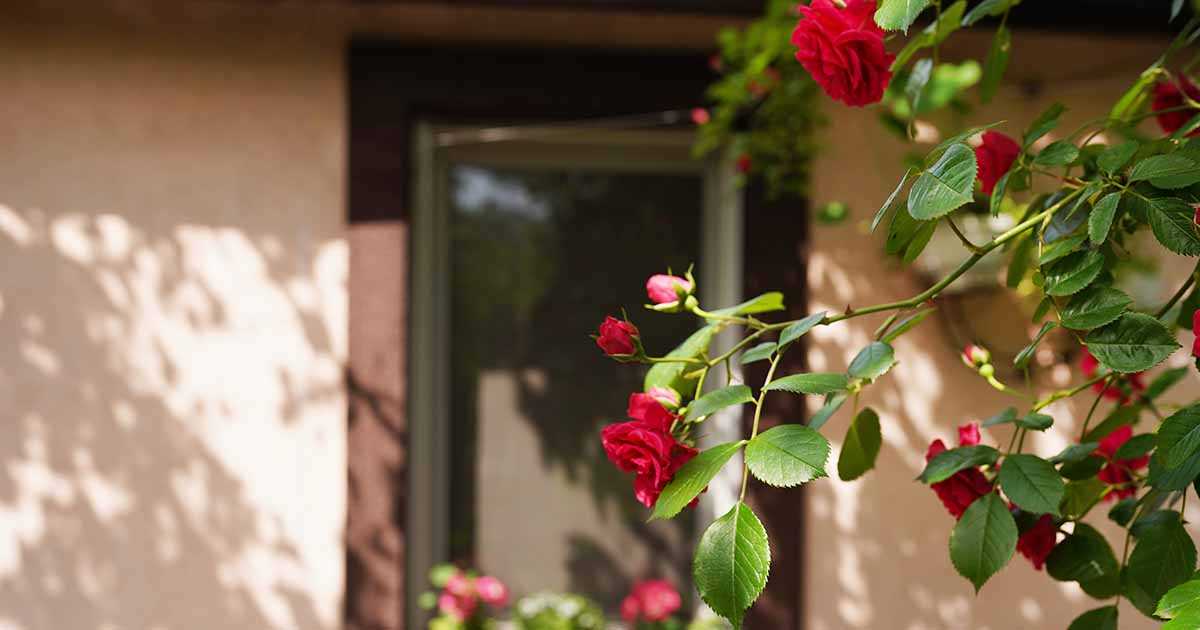- The Beauty of Roses: Unveiling the Secrets to a Flourishing Garden
- Choose the Right Varieties
- Provide Optimal Growing Conditions
- Proper Pruning and Training
- Water and Feed Appropriately
- Pest and Disease Control
- Harvesting and Enjoying Blooms
- Understanding the Basics of Rose Cultivation
- Choosing the Right Variety
- Site Selection
- Soil Preparation
- Watering and Feeding
- Pruning and Maintenance
- Conclusion
- Choosing the Perfect Varieties for Your Garden
- Consider the Climate
- Determine the Purpose
- Choose Disease-Resistant Varieties
- Consult a Nursery or Rose Expert
- Consider the Care Requirements
- Preparing Your Plot for Rose Planting
- 1. Choose the Right Location
- 2. Clear the Area
- 3. Test the Soil
- 4. Amend the Soil
- 5. Dig the Planting Hole
- 6. Prepare the Plant
- 7. Plant the Rose
- 8. Water and Mulch
- The Importance of Soil and Fertilizer for Rose Growth
- Soil Requirements for Roses
- Fertilizing Roses
- Testing and Amending the Soil
- Conclusion
- Watering and Pruning Techniques for Healthy Roses
- Watering your Roses
- Pruning your Roses
- Conclusion
- Pest and Disease Management: Safeguarding Your Roses
- 1. Identifying Common Pests
- 2. Preventive Measures
- 3. Organic Pest Control
- 4. Common Diseases
- 5. Disease Management
- 6. Regular Monitoring
- Enhancing the Beauty of Your Roses: Tips for Companion Planting
- 1. Choose plants with similar growing conditions:
- 2. Select plants with complementary colors:
- 3. Incorporate plants that deter pests:
- 4. Include plants that attract beneficial insects:
- 5. Provide support for climbing roses:
- 6. Consider the growth habits of companion plants:
- Harvesting and Enjoying the Fruits of Your Labor: Rose Maintenance
- Regular Watering
- Pruning
- Fertilizing
- Weeding and Mulching
- Pest and Disease Control
- Winter Protection
- Enjoying Your Roses
- Questions and Answers:
- What are the key secrets to growing beautiful roses?
- How much sunlight do roses need?
- What type of soil is ideal for growing roses?
- How often should I water my roses?
- When should I fertilize my roses?
- Why is pruning important for roses?
- What are common pests and diseases that affect roses?
- Videos: 10 Powerful Rose Plant Care Tips | How to grow Roses?

Imagine stepping out into your garden and being greeted by the breathtaking beauty and intoxicating fragrance of blooming roses. With their delicate petals and vibrant colors, roses are not only a symbol of love and romance, but they can also be a stunning addition to any garden.
Growing roses may seem like a daunting task to some, but with the right knowledge and techniques, anyone can enjoy the rewards of a flourishing rose garden. Whether you’re a seasoned gardener or a novice, there are a few secrets to growing beautiful roses that will ensure success.
First, it’s important to choose the right variety of roses for your garden. There are thousands of different types of roses, each with its own set of characteristics and requirements. Some roses are more resistant to diseases and pests, while others are known for their exceptional fragrance or long blooming period. By researching and selecting the right roses for your specific climate and preferences, you can set yourself up for success from the start.
In addition to choosing the right roses, proper care and maintenance are essential for growing healthy and vibrant plants. Roses thrive when they receive at least six hours of direct sunlight each day, so it’s important to choose a location in your garden that provides adequate light. Additionally, regular watering, fertilizing, and pruning are necessary to promote healthy growth and abundant blooms.
By following these secrets and dedicating some time and effort, you too can create a stunning rose garden that will be the envy of your neighbors. So roll up your sleeves, dig in the dirt, and get ready to unlock the secrets of growing beautiful roses on your plot.
The Beauty of Roses: Unveiling the Secrets to a Flourishing Garden
Roses are universally admired for their stunning beauty and intoxicating fragrance. A flourishing garden adorned with vibrant roses is a sight to behold. But how can you achieve such a picturesque landscape? Unveiling the secrets to growing beautiful roses is the first step towards creating a captivating garden.
Choose the Right Varieties
There are numerous varieties of roses available, each with its own unique attributes. When selecting roses for your garden, consider factors such as climate, soil type, and personal preference. Some popular varieties include hybrid teas, floribundas, and climbers. Research each variety’s growth habit, disease resistance, and blooming season to determine the best fit for your garden.
Provide Optimal Growing Conditions
Roses thrive in well-drained soil with a pH between 6.0 and 6.5. Ensure your garden bed is enriched with organic matter and has good drainage. Choose a sunny location for your roses, as they need at least six hours of direct sunlight daily. Adequate air circulation is also crucial for preventing diseases, so avoid overcrowding the plants.
Proper Pruning and Training
Regular pruning is essential for maintaining the health and shape of your rose bushes. Start by removing any dead, damaged, or weak branches. Prune your roses during the dormant period, typically in late winter or early spring. Train climbing roses to a support structure to create a visually appealing vertical display. Pruning and training will encourage new growth and better flower production.
Water and Feed Appropriately
Proper watering is crucial for the overall health and vitality of your roses. Deep watering once or twice a week is recommended, allowing the soil to dry out slightly before the next watering. Avoid overhead watering, as it can promote fungal diseases. Apply a balanced rose fertilizer every four to six weeks during the growing season to provide essential nutrients.
Pest and Disease Control
Regular monitoring and timely intervention are essential for keeping pests and diseases at bay. Common rose pests include aphids, thrips, and spider mites. Use organic insecticides or insecticidal soaps to control infestations. To prevent diseases such as powdery mildew and black spot, choose disease-resistant rose varieties, ensure proper air circulation, and remove and dispose of any infected leaves or canes.
Harvesting and Enjoying Blooms
Once your roses have bloomed, it’s time to enjoy the fruits of your labor. Harvest flowers early in the morning when they are at their freshest. Use sharp pruning shears to make clean cuts just above a leaf node. Place the cut stems in a bucket of clean water immediately to prolong their vase life. Display your freshly cut roses in a vase and enjoy their beauty and fragrance.
| Task | Frequency |
|---|---|
| Pruning | Once a year during dormancy |
| Watering | Deep watering once or twice a week |
| Fertilizing | Every four to six weeks during the growing season |
| Pest and disease control | Regular monitoring and intervention as needed |
By following these secrets to a flourishing garden, you can create a mesmerizing rose-filled oasis that will be the envy of the neighborhood. With proper care, your roses will reward you with their incomparable beauty year after year.
Understanding the Basics of Rose Cultivation
When it comes to growing beautiful roses on your plot, understanding the basics of rose cultivation is essential. Roses require specific care and attention in order to thrive and produce stunning blooms. Here are some key factors to consider:
Choosing the Right Variety
There are countless varieties of roses available, each with its own unique characteristics. Before getting started, it’s important to select a variety that suits your climate, soil conditions, and personal preferences. Some popular types of roses include hybrid teas, floribundas, grandifloras, and climbers.
Site Selection
Roses need at least 6 hours of direct sunlight a day to grow and flower well. When choosing a spot for your roses, look for an area that receives adequate sunlight and has well-drained soil. Avoid areas with excessive shade or where water tends to gather, as this can lead to fungal diseases.
Additionally, consider the proximity to other plants and structures. Roses benefit from good air circulation, so try to avoid planting them too close to walls or other dense vegetation that may inhibit airflow.
Soil Preparation
Prepare the soil before planting your roses to provide them with the ideal conditions for growth. Roses prefer a slightly acidic soil with a pH between 6.0 and 6.5. If your soil is too alkaline, you can lower the pH by adding organic matter such as well-rotted manure, compost, or pine needles.
It’s also important to ensure that the soil is well-drained. If your soil is heavy or clayey, consider incorporating organic matter or creating raised beds to improve drainage.
Watering and Feeding


Roses require regular watering, especially during dry periods. Water deeply and thoroughly to encourage deep root growth and help the plants withstand drought. Avoid wetting the foliage, as this can promote the development of diseases.
Feeding is also crucial for rose cultivation. Apply a balanced rose fertilizer according to the package instructions to provide the necessary nutrients for healthy growth and abundant blooms. Additionally, consider supplementing with organic matter such as compost or well-rotted manure to improve soil fertility.
Pruning and Maintenance
Regular pruning is essential for maintaining the health and shape of your roses. Prune your roses in early spring before new growth begins, removing any dead, damaged, or diseased wood. This will help promote better air circulation and reduce the risk of disease.
Throughout the growing season, keep an eye out for pests and diseases. Common rose pests include aphids, thrips, and spider mites, while diseases like black spot and powdery mildew can affect the foliage. Promptly address any issues using appropriate organic or chemical controls.
Conclusion
By understanding the basics of rose cultivation, you’ll be well-equipped to grow beautiful roses on your plot. Remember to choose the right variety, select a suitable site, prepare the soil, provide adequate water and nutrients, and perform regular maintenance. With proper care and attention, your roses will reward you with stunning blooms and fragrance.
Choosing the Perfect Varieties for Your Garden
When it comes to growing roses in your garden, choosing the right varieties is crucial. With so many different types and colors of roses available, it can be overwhelming to decide which ones to plant. Here are some tips to help you choose the perfect rose varieties for your garden:
Consider the Climate
The first thing you need to consider when choosing rose varieties is your climate. Some roses are more cold-hardy, while others thrive in warmer regions. Make sure to research which varieties are best suited for the climate in your area. This will ensure that your roses can withstand the temperature extremes and grow well.
Determine the Purpose
Another factor to consider is the purpose of the roses in your garden. Are you looking for roses to use as cut flowers? Do you want roses that will climb up a trellis or fence? Or are you simply looking for beautiful blooms to enhance the visual appeal of your garden? Different rose varieties excel in different areas, so knowing your purpose will help you narrow down your choices.
Choose Disease-Resistant Varieties
Roses are susceptible to various diseases, such as blackspot and powdery mildew. To minimize the risk of these diseases, it’s recommended to choose disease-resistant rose varieties. These varieties have been bred to withstand common rose diseases and require less maintenance to keep them healthy and thriving.
Consult a Nursery or Rose Expert


If you’re still unsure about which rose varieties to choose, consulting a nursery or rose expert can be beneficial. These professionals have extensive knowledge about different rose varieties and can recommend the best options based on your specific needs and preferences. They can provide guidance on the best varieties for your climate, purpose, and desired aesthetics.
Consider the Care Requirements
Finally, consider the care requirements of the rose varieties you’re interested in. Some roses may require more maintenance, such as frequent pruning or special fertilization, while others are more low-maintenance. Assess the amount of time and effort you’re willing to invest in caring for your roses, and choose varieties that align with your gardening capabilities.
By considering these factors and doing thorough research, you can choose the perfect rose varieties for your garden. Remember that different roses have different characteristics, so be sure to choose varieties that will thrive in your climate and meet your specific gardening needs. With the right varieties, your garden will be filled with beautiful roses that bring joy and charm to your outdoor space.
Preparing Your Plot for Rose Planting
Before you start planting roses in your garden, it is important to prepare the plot to ensure the best conditions for their growth and development. Follow these steps to properly prepare your plot:
1. Choose the Right Location
Find a location in your garden that receives at least 6 hours of direct sunlight each day. Roses need sunlight to thrive and produce beautiful blooms. Additionally, choose a spot that has good air circulation to prevent the development of fungal diseases.
2. Clear the Area
Remove any existing plants, weeds, or grass from the area where you plan to plant your roses. Use a garden fork or spade to loosen the soil and remove any large rocks or debris.
3. Test the Soil
Test your soil’s pH level to ensure it is suitable for growing roses. Most roses prefer a slightly acidic soil with a pH level between 6.0 and 6.5. You can purchase a soil testing kit from your local garden center or send a soil sample to a laboratory for analysis.
4. Amend the Soil


If your soil pH is too low, add lime to raise it. If it is too high, add sulfur or peat moss to lower it. Additionally, add organic matter, such as compost or well-rotted manure, to improve the soil’s fertility and drainage.
5. Dig the Planting Hole
Dig a hole that is wide and deep enough to accommodate the rose plant’s root system. The hole should be approximately twice as wide and deep as the rose’s container. Loosen the soil at the bottom of the hole to promote root growth.
6. Prepare the Plant
Remove the rose plant from its container and gently loosen the roots. Trim any damaged or overly long roots. If the rose plant is bare-root, soak the roots in water for a few hours before planting.
7. Plant the Rose
Place the rose plant in the prepared hole, making sure that the bud union (the swollen area where the rose is grafted onto the rootstock) is level with or slightly above the ground. Backfill the hole with soil, firming it gently around the roots.
8. Water and Mulch
After planting, thoroughly water the rose to settle the soil. Apply a layer of organic mulch, such as shredded bark or straw, around the base of the plant to help retain moisture and suppress weeds.
By following these steps and properly preparing your plot for rose planting, you’ll give your roses the best start for healthy growth and abundant blooms.
The Importance of Soil and Fertilizer for Rose Growth
When it comes to growing beautiful roses on your plot, one of the most important factors to consider is the soil and fertilizer you use. Roses are heavy feeders and require nutrient-rich soil to thrive. Here, we will explore the importance of soil and fertilizer for rose growth.
Soil Requirements for Roses
- Roses prefer well-draining soil that is rich in organic matter. This allows for proper root aeration and prevents waterlogging, which can lead to root rot.
- The pH level of the soil should be slightly acidic to neutral, ideally between 6.0 and 7.0. Soil that is too acidic or alkaline can cause nutrient deficiencies or toxicity, affecting the overall health and vigor of the rose plants.
- Compacted soil should be avoided, as it hinders root growth and nutrient absorption. Loosening the soil before planting will create a favorable environment for the roses to grow.
Fertilizing Roses
Fertilizing is crucial for providing roses with the necessary nutrients they need for healthy growth and abundant blooms. Organic or chemical fertilizers can be used, but it is important to choose a balanced fertilizer specifically formulated for roses.
- Nitrogen (N), phosphorus (P), and potassium (K) are the primary nutrients required by roses. Nitrogen promotes vigorous foliage growth, phosphorus enhances root development and flower production, and potassium strengthens overall plant health.
- Follow the recommended application rates on the fertilizer packaging to avoid over-fertilization, which can lead to excessive foliage growth and reduced flowering.
- Regularly fertilizing roses during the growing season, typically every 4-6 weeks, will ensure a continuous supply of nutrients.
- In addition to chemical fertilizers, organic options such as compost, aged manure, or bone meal can also be used. These not only provide nutrients but also improve the soil structure and promote microbial activity.
Testing and Amending the Soil
Before planting roses, it is recommended to test the soil to determine its nutrient content and pH level. A soil test kit or sending a soil sample to a laboratory can provide accurate results.
- Based on the test results, soil amendments can be made to optimize the soil conditions for rose growth. This may include adding lime to raise the pH if it is too acidic or adding sulfur to lower it if it is too alkaline.
- Adding organic matter, such as compost or well-rotted manure, can help improve soil fertility and structure.
Conclusion
Proper soil and fertilizer management are vital for growing beautiful roses on your plot. By providing roses with nutrient-rich soil and regular fertilization, you will ensure vibrant foliage, vigorous growth, and abundant, colorful blooms.
Watering and Pruning Techniques for Healthy Roses
Watering your Roses


Watering is a crucial aspect of rose care and can significantly impact their health and blooming. Follow these watering techniques to ensure your roses stay hydrated and healthy:
- Deep watering: Roses require deep watering to encourage their roots to grow deep into the soil. Water at the base of the plant and avoid wetting the leaves to prevent diseases.
- Frequency: Water your roses deeply once or twice a week, depending on the weather conditions and soil moisture. Adjust the frequency during rainy or dry periods accordingly.
- Early morning or evening watering: Watering roses during the early morning or evening hours allows the plants to absorb moisture before the sun evaporates it. Avoid watering during the hottest part of the day to prevent water loss through evaporation.
Pruning your Roses


Pruning is necessary to maintain the health and shape of your roses. Use these techniques to prune your roses effectively:
- Clean and sharp tools: Always use clean and sharp pruning shears to minimize the risk of disease transmission. Disinfect your tools before and after use.
- Remove dead and damaged wood: Look for any dead, diseased, or damaged branches and remove them to promote new growth and prevent the spread of diseases.
- Shape and size: Prune your roses to maintain their desired shape and size. Trim the canes to the desired height and remove any overlapping or crossing branches.
- Encourage airflow: Prune the center of the plant to improve air circulation and reduce the risk of fungal infections.
- Pruning after flowering: For most rose varieties, prune after the main blooming period to encourage new blooms and maintain plant vigor.
Conclusion
By following proper watering and pruning techniques, you can ensure the health and vitality of your roses. Remember to give them deep watering, at the base of the plant, and prune regularly to remove deadwood and maintain their shape. With proper care, your roses will reward you with abundant blooms and a beautiful garden.
Pest and Disease Management: Safeguarding Your Roses
1. Identifying Common Pests
- Aphids: These small insects suck the sap from rose plants and can cause distortion of leaves and flowers.
- Thrips: Thrips are tiny insects that feed on rose buds and flowers, causing them to become discolored and deformed.
- Spider Mites: These pests create fine webbing on the undersides of leaves and suck the plant’s sap, leading to yellowing and browning of leaves.
- Japanese Beetles: Japanese beetles feed on the foliage and flowers of roses, causing skeletonized leaves and damaged blooms.
2. Preventive Measures
The best way to manage pests is through prevention. Incorporate the following practices to safeguard your roses:
- Plant resistant rose varieties that are less susceptible to common pests.
- Keep your roses healthy by providing them with proper sunlight, water, and nutrients. Healthy plants are less prone to pest attacks.
- Prune your roses regularly to remove weak and diseased branches, which can attract pests.
- Clean up fallen leaves and debris around your rose plants as they can harbor pests and disease-causing organisms.
3. Organic Pest Control
When pests do infest your roses, consider using organic pest control methods to minimize the impact on beneficial insects and the environment:
- Handpicking: Remove pests such as aphids and Japanese beetles by hand and drop them into a bucket of soapy water.
- Neem oil: Spray neem oil on affected plants to repel pests and inhibit their feeding and growth.
- Beneficial insects: Introduce natural predators such as ladybugs and lacewings to control pest populations.
4. Common Diseases
Roses can also be susceptible to various diseases, including:
- Black Spot: This fungal disease causes black spots on leaves, leading to defoliation and reduced vigor.
- Powdery Mildew: Powdery mildew appears as a white powdery coating on leaves, causing them to curl and distort.
- Rust: Rust is characterized by orange-brown pustules on leaves and stems.
5. Disease Management
To manage rose diseases effectively, follow these practices:
- Choose disease-resistant rose varieties.
- Provide adequate spacing between plants to improve air circulation.
- Water the plants at the base to avoid wetting the leaves.
- Remove and dispose of infected plant material.
- Apply organic fungicides, such as copper-based sprays, according to product instructions.
6. Regular Monitoring
Regularly inspect your roses for signs of pests and diseases. Early detection allows for prompt action and minimizes damage to your plants. By implementing proper pest and disease management practices, you can safeguard the health and beauty of your rose garden.
Enhancing the Beauty of Your Roses: Tips for Companion Planting
Companion planting is a technique that involves planting certain plants together to enhance the growth and beauty of roses. By selecting the right companions, you can create a harmonious garden that not only looks stunning but also promotes the health and vitality of your rose plants. Here are some tips for companion planting with roses:
1. Choose plants with similar growing conditions:
When selecting companion plants for your roses, it’s important to choose plants that have similar growing conditions. This includes factors such as sunlight requirements, soil type, and water needs. By planting compatible plants together, you’ll ensure that all the plants in your garden thrive and flourish.
2. Select plants with complementary colors:
Another way to enhance the beauty of your roses through companion planting is by selecting plants with complementary colors. This will create an eye-catching visual display that highlights the vibrant hues of your rose blooms. For example, you could pair red roses with plants that have purple or yellow flowers.
3. Incorporate plants that deter pests:
Companion planting can also be used to deter pests that may attack your rose plants. Certain plants, such as marigolds and lavender, have natural pest-repellent properties. By planting these companion plants near your roses, you can help protect them from common pests such as aphids and Japanese beetles.
4. Include plants that attract beneficial insects:
In addition to deterring pests, companion planting can also attract beneficial insects to your garden. Plants such as yarrow and daisies are known to attract beneficial insects like ladybugs and lacewings, which help control aphid populations. By including these plants near your roses, you can create a balanced ecosystem that supports the health of your rose plants.
5. Provide support for climbing roses:
If you have climbing roses in your garden, companion planting can provide additional support for these plants. You can plant climbing roses near trellises or fences and pair them with other vertical-growing plants, such as clematis or morning glories. This will not only provide support for your roses but also create a stunning vertical display.
6. Consider the growth habits of companion plants:
When selecting companion plants, it’s important to consider their growth habits. Avoid planting invasive or aggressive plants that may overshadow or compete with your roses for resources. Instead, choose plants that have a more restrained growth habit, allowing your roses to take center stage.
By following these tips for companion planting, you can enhance the beauty of your roses and create a vibrant and thriving garden that will be the envy of all your neighbors.
Harvesting and Enjoying the Fruits of Your Labor: Rose Maintenance
Proper maintenance is key to keeping your roses healthy and vibrant, ensuring you can enjoy their beauty for years to come. Here are some essential tips for the care and maintenance of your rose plants:
Regular Watering
Watering is crucial for the overall health of your roses. Make sure to water them deeply, at the base of the plant, rather than sprinkling the leaves. This helps prevent diseases and encourages deep root growth. Roses generally require about 1 inch of water per week, but it may vary based on the climate and soil conditions.
Pruning
Pruning is an essential part of rose maintenance. It helps shape the plant, remove dead or diseased wood, and promotes new growth. Prune your roses in late winter or early spring, before new growth begins. Remove any thin or weak stems and cut back about one-third of the height. Make sure to use sharp and clean pruning shears to prevent the spread of diseases.
Fertilizing


Regular fertilizing is important to provide necessary nutrients for your roses. Use a balanced rose fertilizer or a slow-release fertilizer formulated specifically for roses. Apply the fertilizer according to the instructions on the package, usually in early spring and again in early summer. Avoid over-fertilizing as it can lead to excessive foliage growth at the expense of blooms.
Weeding and Mulching
Keep the area around your rose plants weed-free to prevent competition for nutrients and water. Regularly remove any weeds that may appear. In addition, applying a layer of organic mulch around the base of the plants helps retain moisture, suppress weeds, and regulate soil temperature. Use materials like wood chips, straw, or compost, and ensure the mulch is about 2-3 inches deep.
Pest and Disease Control
Regularly inspect your rose plants for any signs of pests or diseases. Common rose pests include aphids, spider mites, and Japanese beetles. If you notice any infestations, treat them promptly with appropriate organic or chemical controls. It’s also important to monitor for diseases like black spot or powdery mildew, and take necessary measures such as using fungicides or removing infected foliage.
Winter Protection
In colder climates, it’s important to protect your roses from harsh winter conditions. After the first frost, gently mound soil around the base of each plant to insulate the roots from freezing temperatures. You can also cover the plants with burlap or use rose cones to provide additional protection. Mulching the base of the plants with organic material can also help insulate them during winter.
Enjoying Your Roses
After all the hard work and care, it’s time to enjoy the beautiful blooms of your roses. Whether you cut them for floral arrangements or simply admire them in your garden, the vibrant colors and enticing fragrance will surely bring joy to your life. Don’t forget to share the beauty of your roses with friends and family, and encourage them to grow roses of their own!
Questions and Answers:
What are the key secrets to growing beautiful roses?
The key secrets to growing beautiful roses include providing them with the right amount of sunlight, regular watering, proper soil preparation, fertilization, pruning, and protection against pests and diseases.
How much sunlight do roses need?
Roses need at least 6 hours of direct sunlight per day. However, some varieties may require more sunlight, so it is important to choose the right rose varieties for your specific climate and growing conditions.
What type of soil is ideal for growing roses?
Ideal soil for growing roses is well-drained and rich in organic matter. It should have a pH level of around 6.5 to 7.0. Adding compost or aged manure to the soil can help improve its quality and drainage.
How often should I water my roses?
Roses require regular watering, especially during dry periods. It is best to water them deeply once or twice a week, depending on the weather and soil moisture levels. The key is to keep the soil consistently moist, but not overly saturated.
When should I fertilize my roses?
Roses should be fertilized in early spring, just as they start to grow. Repeat applications of fertilizer can be done every 4-6 weeks throughout the growing season. Use a balanced fertilizer specifically formulated for roses to provide them with the necessary nutrients.
Why is pruning important for roses?
Pruning is important for roses as it helps promote new growth, improve air circulation, and maintain the desired shape and size of the plants. It also helps remove dead, damaged, or diseased wood, which can attract pests and diseases.
What are common pests and diseases that affect roses?
Common pests that affect roses include aphids, thrips, spider mites, and Japanese beetles. Diseases such as blackspot, powdery mildew, and rust are also common. Properly maintaining the plants, removing any infected materials, and applying appropriate pest control measures can help prevent and manage these issues.







